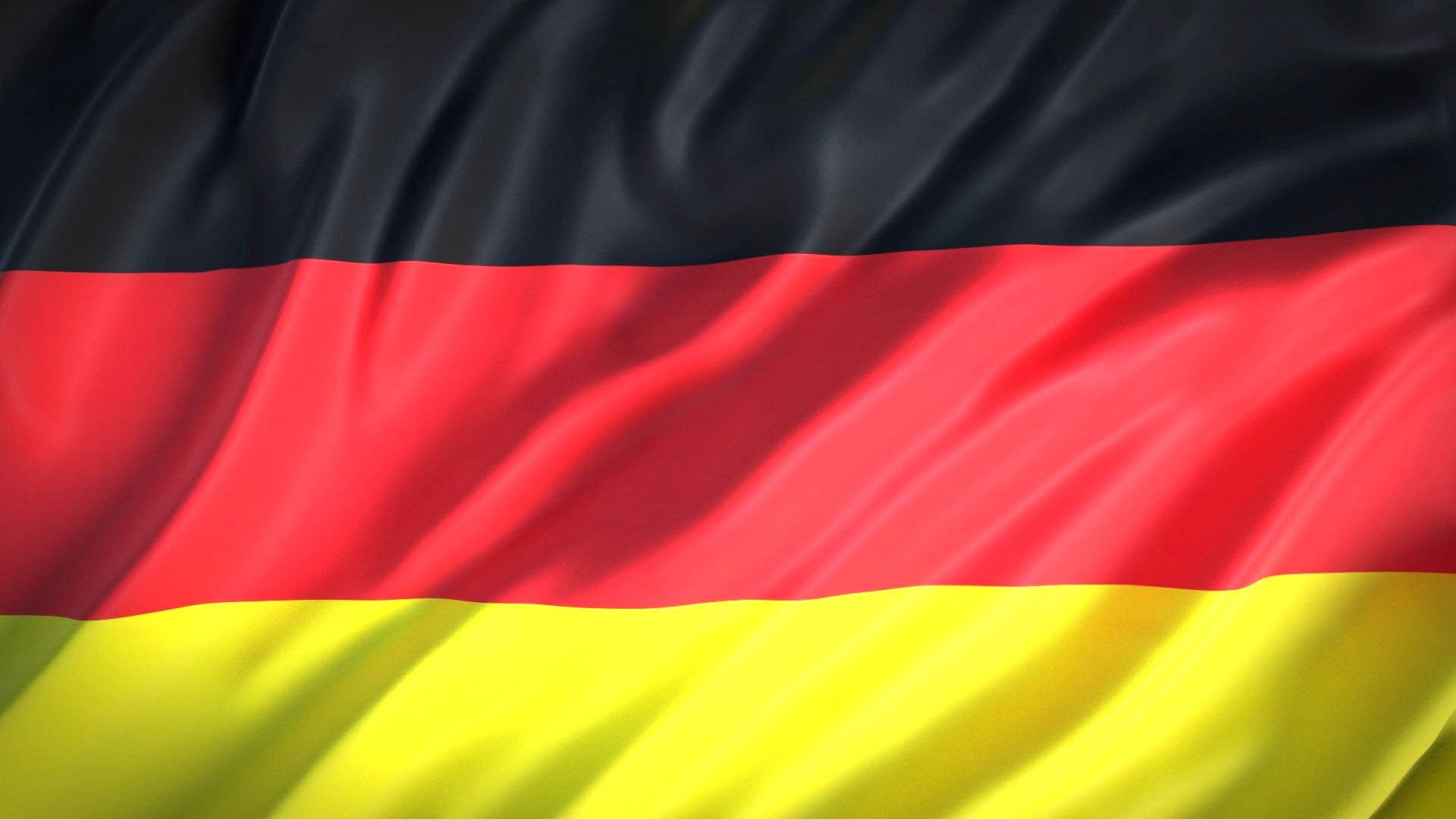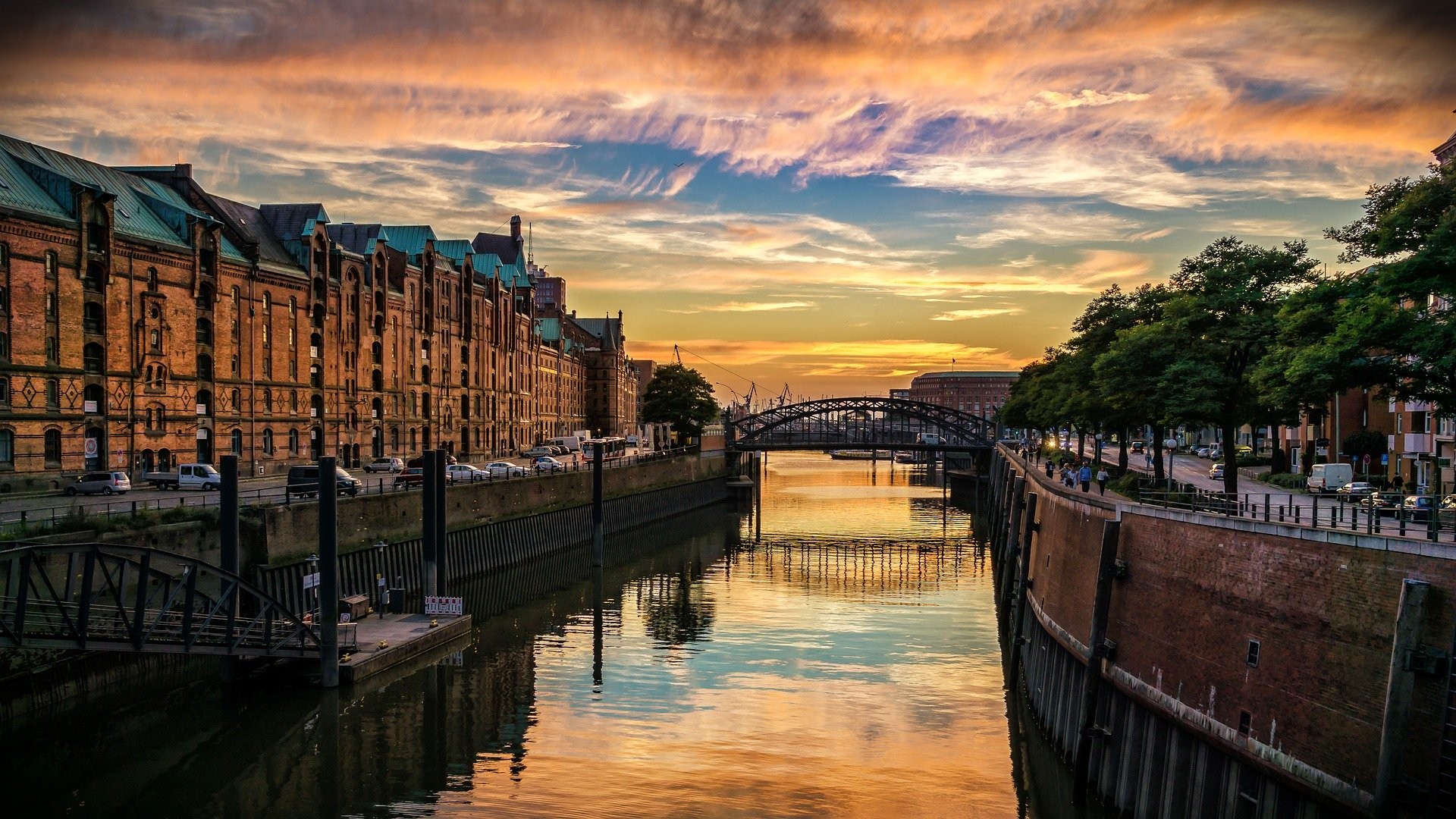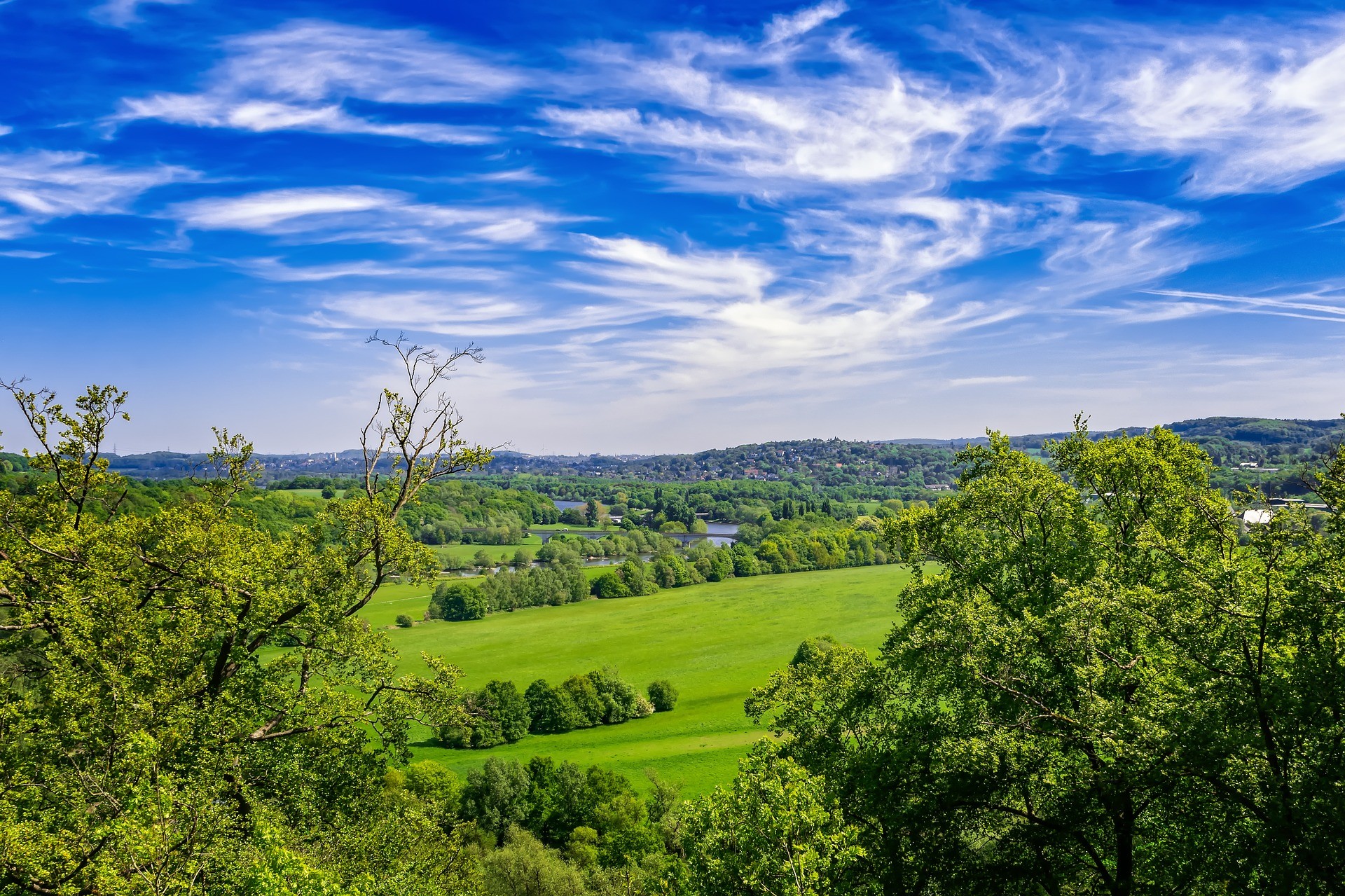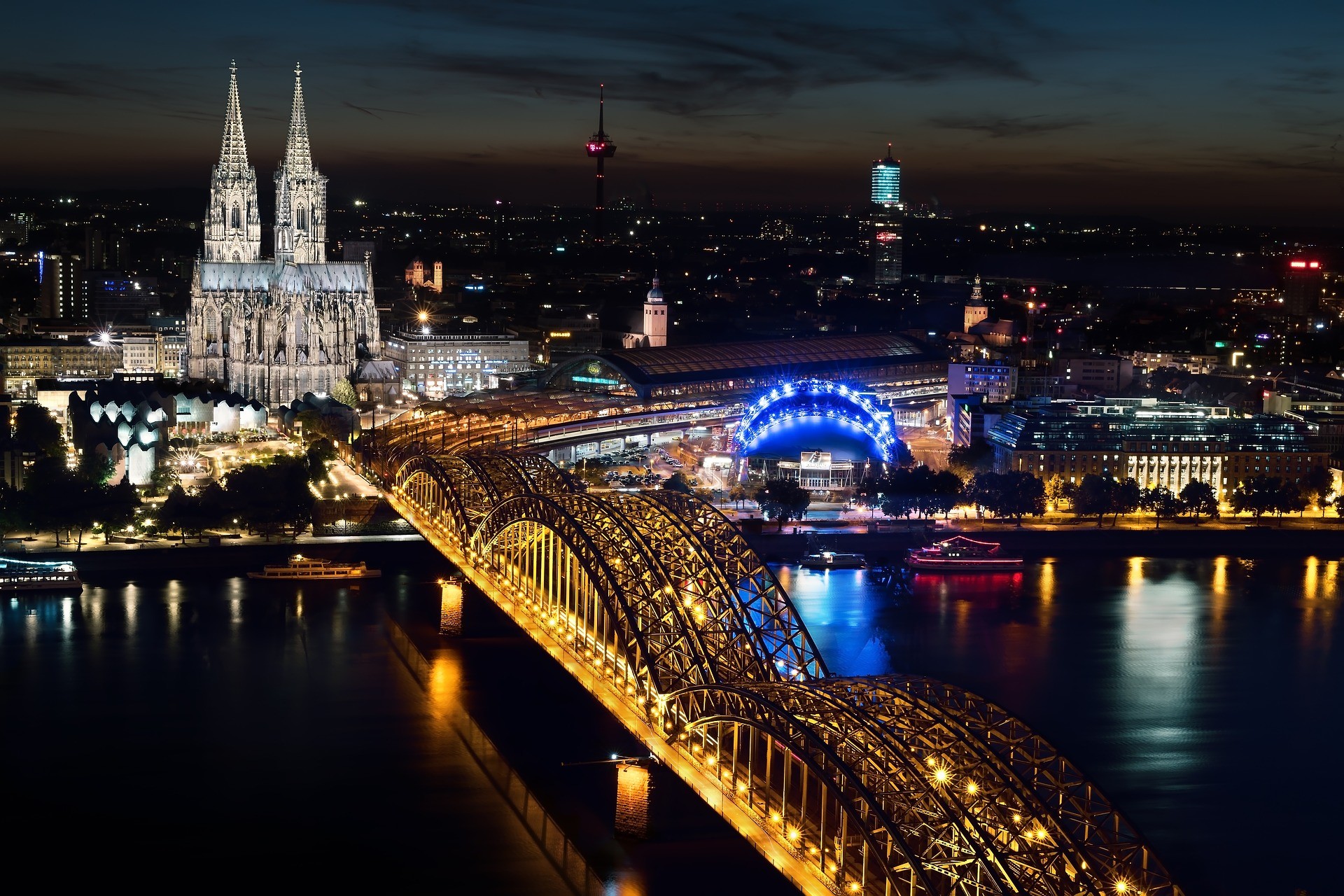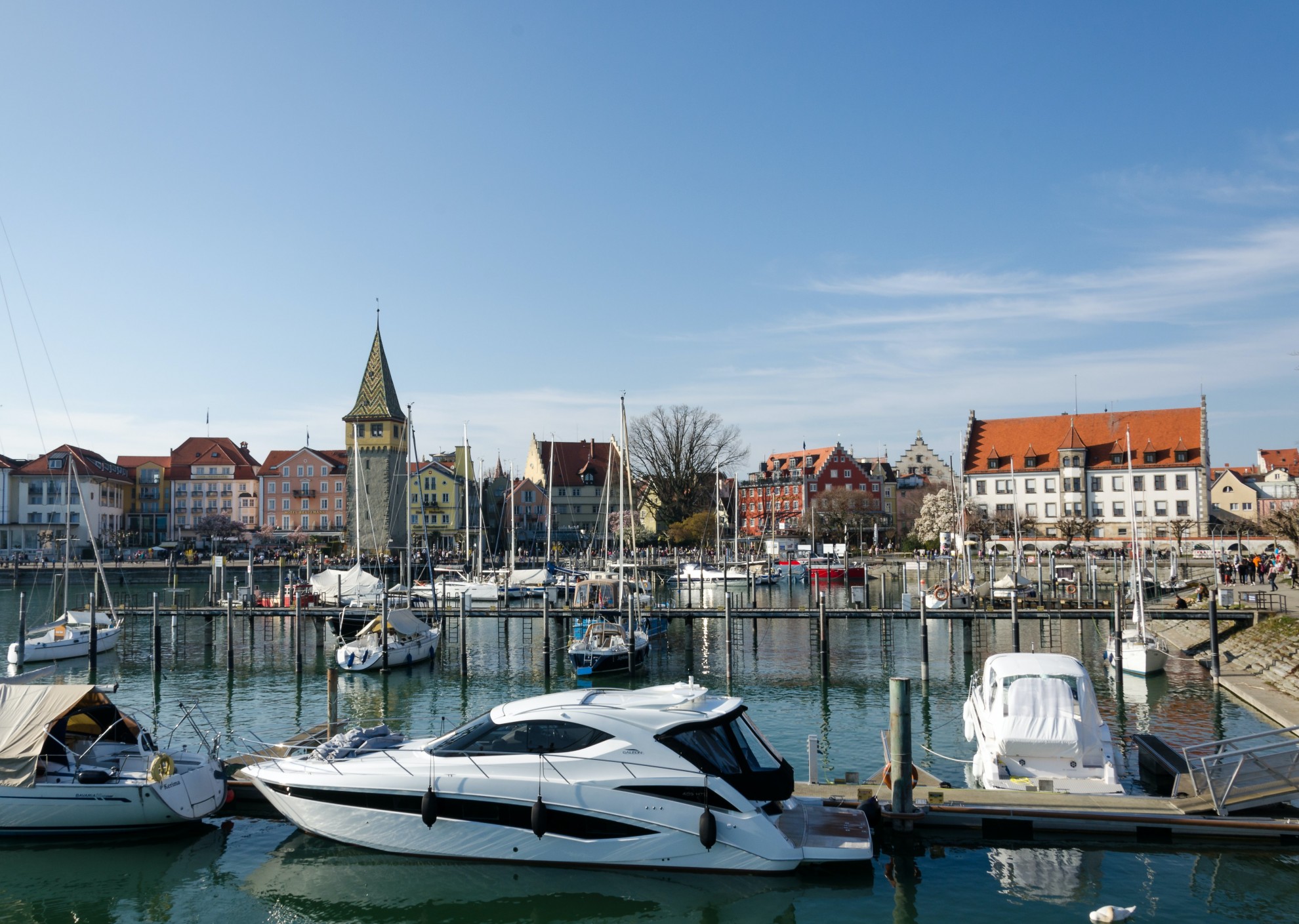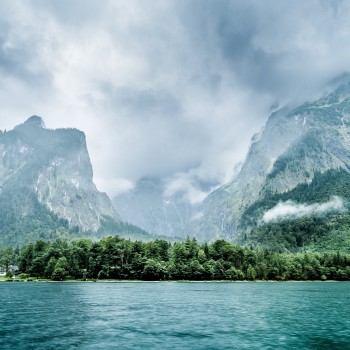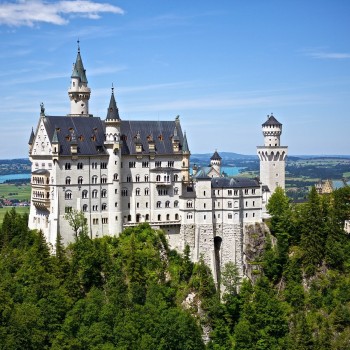Germany
Germany
Capital city description
Berlin is Germany's capital and largest city, located in northern Germany, the sandy region between the Spree and Havel rivers. Berlin is the most important political, economic, and cultural center of Northern Germany. Berlin serves as one of the leading tourist destinations for its rich historical heritage. Attractions in the city include the Berlin Fashion Week, Museum Island, and the Jewish Museum.
In addition, Berlin serves as the seat for several religious organizations, including the Roman Catholic Archbishop of Berlin and the Cathedral of St. Boris. Several world-class educational institutions are located within the city, such as the Humboldt University of Berlin and the Free University of Berlin.
Climate
Germany's climate is temperate and marine, with cold, cloudy winters and warm summers, and occasional warm. The weather in the east is clear continental, with winters being freezing and summers being very warm.
The northernmost area (see Bremen, Hamburg, Lübeck, Rostock, Kiel) is slightly milder, but it's also rainier and windier because of the influence of the Atlantic Ocean. The massifs of south-central Germany and the small portion of the Alps in the far south have a mountainous climate, which is colder as altitude increases.
- Spring: March to May
- Summer: June to August
- Autumn: September to November
- Winter: December to February
Languages spoken
German is the primary and official spoken language of Germany. Germans' most common foreign languages are English, French, and Spanish. At the same time, Romani and Danish are the two other minority languages spoken in the country.
Fun/Fascinating Facts
- Germans love sausage; there are over 1,000 varieties of sausage in Germany. Germany's most popular sausage-based dish is currywurst, sausages smothered in spicy curry.
- In Germany, they bake over 300 varieties of bread and over 1,200 kinds of pastries, cakes, and other baked goods. If you're a gastronomist who loves to experience cultural foods, Germany is a perfect location for you to try a little bit of everything.
- Some of the world's most famous inventions were created in Germany - the lightbulb, automated calculators, automobiles, insulin, petrol engines, jet engines, the Walkman, and many more.
- Germany is the second-largest beer consumer in Europe - they drink around 2.55 billion gallons of it a year. If you want to order one beer in Germany, you show your thumb, and for two beers, you display your first finger.
- The most fantastic Beer Festival globally is the Oktoberfest in Munich, Bavaria, where the beer glass size is not 500ml but a whole liter.
Unique Customs/Traditions
- Germans drink a lot of beer, eat sausages and make bread of different tastes. They are the second-largest beer consumers in Europe, after the Czech. It is estimated that the average German consumes around 140 liters of beer per year. On the other hand, German sausages are an integral part of German cuisine, pork, beef, or veal and flavored differently. As for bread, there is a long tradition of bread-baking of which Germans take pride in.
- ‘Kaffee und Kuchen’ means afternoon tea whereby families and friends stop working to come together for coffee and cake in the afternoon is one of the typical German traditions.
- Traditional clothing in Germany includes the world-famous Lederhosen, an outfit once worn by rural men, traditionally those undertaking farm work or manual labor. A knee-length set of breeches complete with braces, worn over a short-sleeve shirt, Lederhosen are usually associated with Bavarian and Tyrolean culture.
- For women, traditional German clothes include the Dirndl, a dress made from a bodice, pinafore, and a full skirt. The shirt underneath is usually low cut and made with short puffy sleeves. Today these clothes are no longer seen on farmworkers but the staff and partygoers at beer festivals.
Popular universities
| Name | Description | |
|---|---|---|
| Technical University of Munich | Founded in 1868, Technical University of Munich is a public research university in Munich; the Technical University of Munich is one of the best universities in Europe, having three campuses in Garching, Freising-Weihenstephan, and Munich. The academic faculties of the university are divided into three campuses. The main campus is in Munich includes the departments of Architecture, Information Technology and Electrical Engineering, Civil Engineering, Economics, Medicine, and Social Sciences. The second campus is situated in Garching, which houses faculties of Chemistry, Physics, Mechanical Engineering, Informatics, and Mathematics. The third campus is located in Weihenstephan, which is just 35 km north of Munich that is home to several faculties, including Agriculture Science and Horticulture, Biology, Forestry and Resource Management, Nutrition, Landscape Planning, Architecture, and Food Technology. | |
| Ludwig Maximilian University | Established in 1472, Ludwig Maximilian University is an open research university associated with LERU, Europaeum, and the German Excellence Universities. The significant faculties at the university include the Faculty of Law, Faculty of Economics, Faculty of Business Administration, Faculty of Theology, Faculty of Social Sciences, Faculty of History, Faculty of Educational Sciences, and the Faculty of Language and Literature. | |
| Heidelberg University | Heidelberg University is a public research university in Heidelberg, Baden-Württemberg, and Germany's oldest university founded in 1836. The language of instruction is generally German, while a significant number of graduate degrees are offered in English and some in French. Heidelberg University offers undergraduate degree programs, postgraduate degree programs, and doctoral level programs for students to pursue. The university offers courses in twelve subjects including, Behavioral and Cultural Studies, Philosophy, Modern Languages, Economics and Social Sciences, Biosciences, Physics and Astronomy, Chemistry and Earth Sciences, Math and Computer science, Theology, Law, and two medical faculties. | |
| Humboldt University of Berlin | Established in 1801, Humboldt University of Berlin is a public research university in Berlin, Germany. The university has nine faculties, three major institutes, five central units, and nine interdisciplinary centers. The research-intensive Humboldt University of Berlin offers courses in various fields of education like agriculture, biology, biophysics, business, chemistry, computer science, mathematics, economics, economics, horticulture, theology, management, psychology, medicine, social sciences, and sports. Students are provided with excellent information, counseling services, and job and internship opportunities. | |
| Free University of Berlin | The Free University of Berlin is a public research university in Berlin, Germany, founded in 1948. The university holds membership in various prestigious international and national organizations like the European Universities Association (EUA) and Network of Universities from the Capitals of Europe (UNICA). The university offers 52 doctoral, 105 graduate, and 73 undergraduate degree programs in various fields like social sciences, biology, chemistry, physics, chemistry, medicine, pharmacy, mathematics, languages, cultural studies, law, economics, business, and arts. The university has 11 academic departments, four multi-disciplinary central institutes, and one merged medical school with the Humboldt University of Berlin. | |
| Karlsruhe Institute of Technology | Established in 1825, Karlsruhe Institute of Technology (KIT) is one of the largest scientific institutions in Europe, the only German university of excellence with large-scale national research that combines a long university tradition with program-oriented cutting-edge research. The university has 11 faculties: The university has eleven faculties: Mathematics, Physics, Chemistry, and Biology, Humanities and Social sciences, Architecture, Civil engineering, Geology, and Ecological Sciences, Mechanical Engineering, Chemical, and Process Engineering, Electrical engineering and Information Technology, Computer Science, Economics and Management. | |
| RWTH Aachen University | Established in 1870, the RWTH Aachen University is an open research university. The university offers undergraduate degree programs, postgraduate degree programs, and doctoral level programs. It includes several subjects that are categorized into nine faculties, namely Faculty of Arts and Humanities, Faculty of Architecture, Faculty of Civil Engineering, Faculty of Mathematics and Computer Sciences, Faculty of Mechanical Engineering, Faculty of Medicine, Faculty of Business and Economics, Faculty of Geo-resources and the Faculty of Electrical Engineering. | |
| Technical University of Berlin | Founded in 1879, the Technical University of Berlin is a prestigious research institution in Berlin, Germany. The Technical University of Berlin is famous for its engineering programs in computer science, economics and management, mathematics, planning, human sciences, process science, and mechanical engineering. These seven faculties offer varied courses that include 40 Bachelor's programs and 60 Master's programs for the students to choose from. | |
| Dresden University of Technology | Established in 1828, Dresden University of Technology is a public research university in Dresden. Dresden University focuses on interdisciplinary approaches and offers various undergraduate, postgraduate, and certificate levels courses. The university maintains a world-class infrastructure, including hi-tech laboratories, art studios, computer labs, and libraries offering research-driven education. | |
| University of Tuebingen | Established in 1477, the University of Tuebingen is is a public research university located in the city of Tübingen, one of the oldest universities in Germany. The faculties of the University of Tuebingen include Protestant Theology, Catholic Theology, Law, Medicine, Humanities, Economics and Social Sciences, and Science. Apart from these, there are several interfaculty institutes in the university, such as the Interfaculty Institute for Cell Biology, Interfaculty Institute of Microbiology and Infection Medicine, Interfaculty Institute of Biochemistry, and Inter-faculty Centre for Archaeology. | |
Festivals & Events
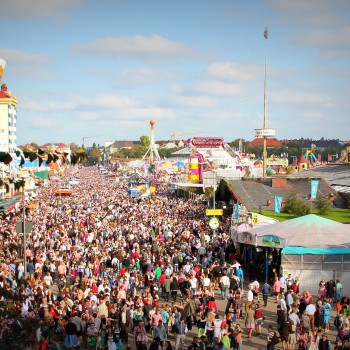
Oktoberfest, Munich
Date: September to October
One of Germany's best and famous festivals, Oktoberfest, draws millions to enjoy Bavarian beer and food, live bands, and parades. Before assembling at the Theresienwiese fairground, this 3-week-long festivity kicks off with a vibrant parade of carriages, floats, and people in traditional costumes.
You can find hundreds of large tents with gallons of beers supplied by renowned Munich breweries, with traditional Bavarian music blaring out of massive speakers throughout the day. Fairground rides such as Ferris wheels, miniature trains, and merry-go-rounds offer hours of fun for families, especially for youngsters.
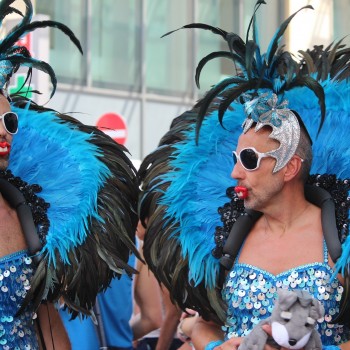
Cologne Carnival
Date: February
Cologne Carnival is one of the enormous German street festivals. It draws over a million visitors to observe the marching bands and colorful parades on the streets. It features several flamboyant floating boats, unique and crazy costumes, and other small events that constitute Cologne Carnival.
Traditional music, dance, and live performances during the day, followed by more parties and street shows well into the night of the festival.
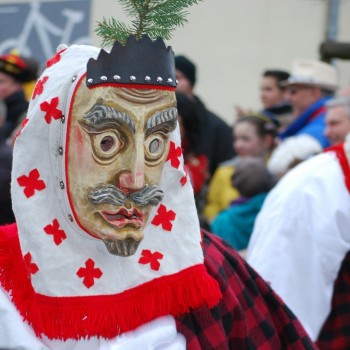
Carnival of Cultures
Date: June
The Carnival of Cultures celebrates annually in Berlin showcases Germany's diverse, multicultural upbringing, extravagant parade, and colorful carnival celebration. It is Berlin's most renowned street festival, where it serves as an appropriate platform for cultural conglomeration featuring Germany's various culinary delights, cultural performances, and lavish costumes.
This exciting and momentous festival in Germany highlights the bright and cheerful street parades with over 4,000 participants worldwide.
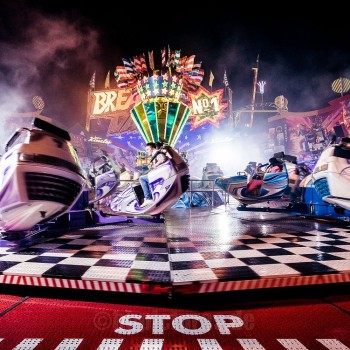
Cannstatter Volksfest
Date: September
Cannstatter Volksfest is a family-friendly festival that lasts for about three weeks, starting from late September. The festival begins with a dazzling street parade, horse-drawn brewery wagons, locals dressed in traditional costumes, and marching bands. Undoubtedly, one of Stuttgart’s best and well-known festivals, its many fairground attractions include haunted houses, roller coasters, and Ferris wheels of various shapes and sizes. You can also find a variety of food stalls and beer tents at Cannstatter Volksfest, where you can enjoy delicious local fare, German beers, and wines throughout your visit.
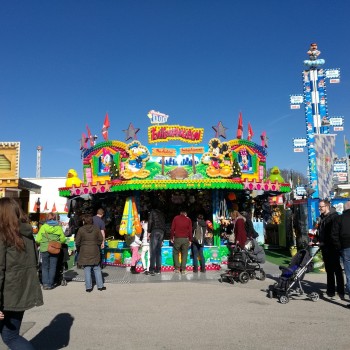
Wurstmarkt
Date: September
The world's most prominent wine festival, Wurstmarkt, is held every 1st and 3rd weekend of September, in the Bad Dürkheim, attracting over 500,000 people annually. It celebrates two of Germany's most famous exports – wine and wurst (sausage). The festival was first observed in the 12th century when farmers and wineries of Bad Dürkheim sold their produce for pilgrims heading up to Michaelskapelle (St. Michael's Chapel).
Nowadays, it's a fair-like event with hundreds of food stalls, carnival rides, fireworks displays, and wine halls. One of the best spots to celebrate Wurstmarkt is at Durkheimer Riesenfass, a gigantic wine barrel with an onsite restaurant.
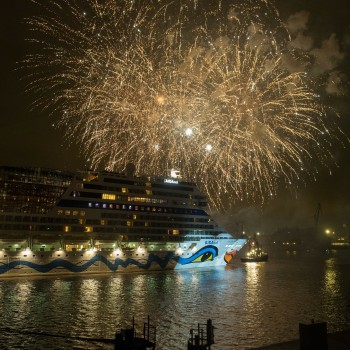
Rhine in Flames Festival
Date: Between May and September
The Rhine in Flames festival is the most sensational, stunning, and significant event in Rhine Valley. The Rhine River goes up in a dazzling display of lights and flame between May and September. Thousands of shimmering fireworks are ignited over 60 ships traversing the river and some hilltop locations, resulting in a scene of some truly outstanding lighting display.
During the event, Europe's biggest riverboat parade makes the trip from Spay to Koblenz. More than 60 riverboats glide down the river past romantic Rhine villages, fortresses, and castles. Both sides of the river are lit up by Bengal torches, as are the forts and many villages. Fireworks accompany the river pageant before the unique huge fireworks display is set off, bathing the Ehrenbreitstein Fortress and the Deutsches Eck in Koblenz in magical light.
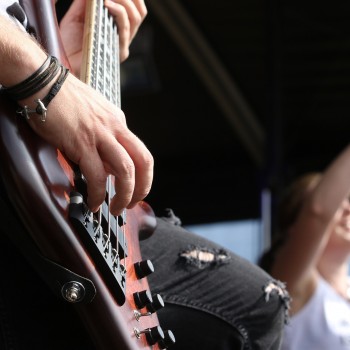
Bachfest Leipzig
Date: July
Held annually in July, The Bachfest Leipzig is a music festival in the city of Leipzig. Since 1904, Bachfest brought honor to Johann Sebastian Bach, the legendary composer, and musician of the Baroque period. It features the original Bach locations where J.S. Bach once worked and the high quality of the program itself.
The music fest showcases peaceful and pleasant performances such as a mixture of secular and sacred concerts, atmospheric jazz interpretations, chamber concerts, open-air events, and organ trips.
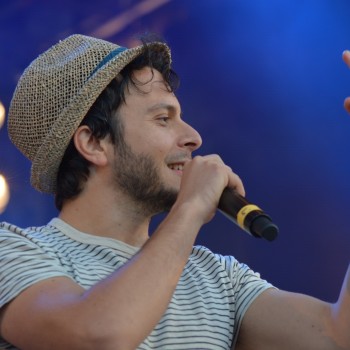
Reeperbahn Festival
Date: September
Reeperbahn Festival is Germany’s most extensive music festival with hundreds of events. It offers music fans a chance to enjoy a variety of genres and up-and-coming artists from across the world.
Around 350 music concerts, art exhibitions, conferences, and film screenings are held in and around the St. Pauli district in four days of September. Venues range from underground clubs and bars to grand buildings such as Imperial Theatre, Schulmuseum, and St. Pauli Cathedral.
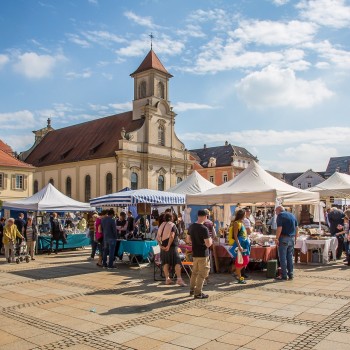
Weimar Onion Festival
Date: October
The onion festival is a unique, unusual event in Weimar, established in 1653. The vibrant and fragrant event draws about 300,000 visitors every year.
The festival hosts a contest of choosing the ”Queen of the onion.” The massive number of onions on display is the highlight of the festivity. The festival also features live music, beer, and food stalls to spice up the event and create a lively, festive atmosphere.
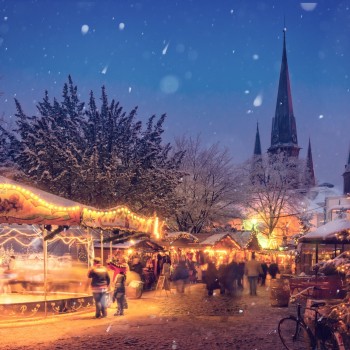
Weihnachtzauber
Date: November to December
The Weihnachtzauber (Christmas Magic) Gendarmenmarkt is a Christmas market on one of the most stunning public squares in Berlin. This Christmas market is famous for its enormous artifacts displays and artists’ workshops. About a month before Christmas, crowds of locals and tourists enjoy a variety of activities and seasonal specialties at these vibrant markets.
You can find plenty of quaint wooden stalls selling winter clothing, trees, decorations, handicrafts, toys, and nativity figures. Charlottenburg Castle, KulturBrauerei, Kaiser Wilhelm Memorial Church, and Gendarmenmarkt have some of the largest Christmas markets in Berlin.
Attractions / Top Sights
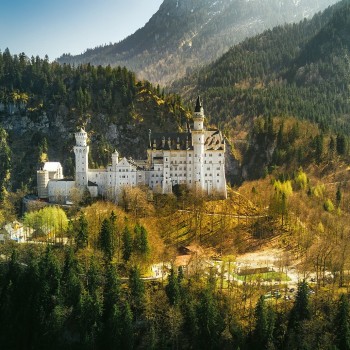
Neuschwanstein Castle
When to visit: In spring and autumn
When to visit: https://www.neuschwanstein.de/
One of the most visited castles in Germany and one of the most famous tourist destinations in Europe, the stunning Neuschwanstein Castle, the castle of King King Ludwig II of Bavaria, built in the 19th century.
The most fabulous fairytale castle, Neuschwanstein, is situated on a rugged hill near Füssen in southwest Bavaria. Neuschwanstein is the most picturesque building in the country. It was the inspiration for the castle of Cinderella and Sleeping Beauty in Disneyland.
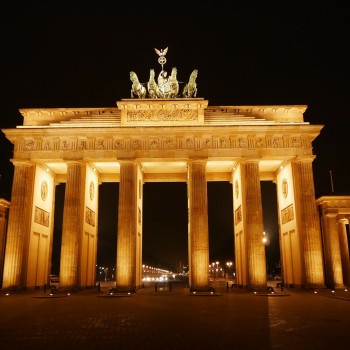
Brandenburg Gate
When to visit: April to October
The 18th-century neoclassical monument, Brandenburg Gate, is Berlin's only surviving city gate and symbolizes the reunification of East and West Berlin. It measures an impressive 26 meters in height, including the Quadriga, the symbolic four-horse chariot carrying the goddess of victory perched atop. It is viewed as one of the most prominent landmarks in Europe.
Its six massive columns on each side of the structure form five impressive passages: four were used by regular traffic, while the center was reserved for the royal carriages. Massive Doric columns also decorate the two buildings at each side of the Gate, once used by toll collectors and guards. Undoubtedly, one of the best tourist spots in Germany.
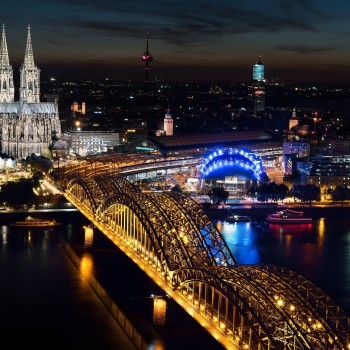
Cologne Cathedral
When to visit: April to October
The stunning soaring Cologne Cathedral (Kölner Dom) - the Cathedral of St. Peter and St. Mary is one of Germany's UNESCO World Heritage List inscribed in 1996. It is located on the banks of the Rhine and is undoubtedly Cologne's most renowned landmark. This masterpiece of High Gothic architecture is one of the most towering cathedrals in Europe.
Its exquisite interior covers an area of 6,166 square meters and boasts 56 massive pillars. Above the high altar is the Reliquary of the Three Kings, a 12th-century work of art in gold designed by Nicholas of Verdun to house the relics of the Three Kings brought here from Milan.
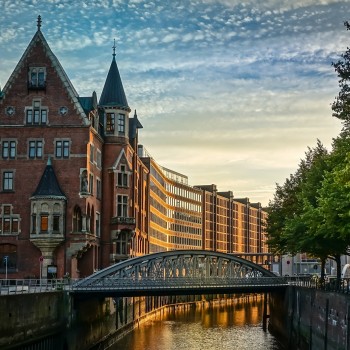
Miniatur Wunderland and the Historic Port of Hamburg
When to visit: June to September
Located in Speicherstadt in Hamburg, Germany, the Miniatur Wunderland is the most significant model railway globally and Hamburg's famous tourist attraction, attracting millions of visitors from all over the world. A unique miniature masterpiece was created on 1,499 square meters in around 795,000 working hours, and it continues to grow.
The Wunderland is a spectacular miniature cosmos that cannot be seen anywhere else in the world. In addition to its sophisticated technology, it impresses above all with its richness of detail. Over 265,000 figures were lovingly staged, cars and ships moved through the landscapes, and even airplanes took off from Knuffingen Airport every minute.
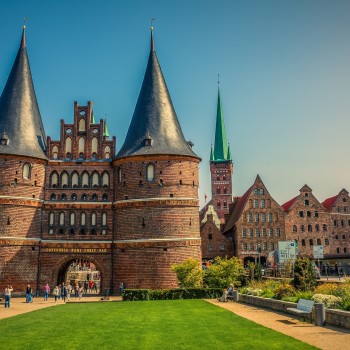
Holstentor
When to visit: May to October
Built in 1464, a panoramic medieval gate, Holstentor is one of the two remaining city gates of the city of Lübeck, now serving as a museum. The building is a twin tower with slate-roofed conical roofs formed by two mighty towers, the middle of which includes an intermediate wing in which the round-arched entrance gate is located.
The most impressive facade decoration of the Holstentor is the so-called terracotta friezes encircling the entire building. Together with the old city center (Altstadt) of Lübeck, it is one of the foremost tourist attractions in Germany.
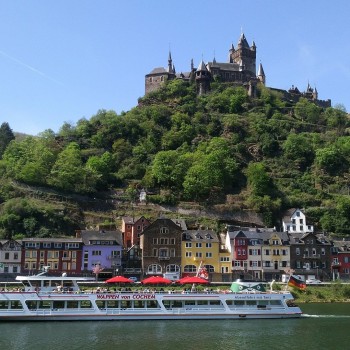
Rhine Valley
When to visit: April to October
The Rhine is one of Europe’s significant rivers. With 1,320 kilometers, this magnificent river stretches from Switzerland through Germany to the Netherlands. The Rhine Valley region bears inspiring beauty and rich cultures along fertile banks. Gentle cruises bring tourists to charming riverside towns and numerous historic castles. Inspiring landscapes worthy of portraits surround you.
The panoramic Upper Middle Rhine Valley section – designated a UNESCO World Heritage Site – is the most famous spot for tourists to visit. It houses 40 stunning castles and some 60 picturesque medieval towns.
.jpg)
Schwarzwaldn - Black Forest
When to visit: May to September
Located in southwest Germany, Schwarzwald, or the Black Forest, is a famous extensive forested mountain range. The most renowned tourist destinations and resorts in the Black Forest are the Titisee and the Schluchsee. Both lakes offer opportunities for water sports like diving and windsurfing. Hiking, swimming in chilly Alpine lakes, and mountain biking are popular pastimes.
Within the forest are several towns and cities. Baden-Baden is a world-famous spa retreat perfect for relaxation, and Freiburg is a bustling university town with fantastic cuisine and nightlife.
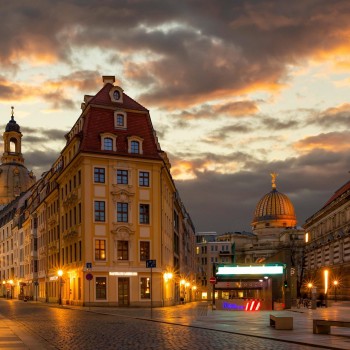
Frauenkirche (Church of Our Lady)
When to visit: May to September
The Frauenkirche (Church of Our Lady) is a Lutheran church ruined during WWII, located in Dresden. The city of Coventry, which the Luftwaffe raided, donated the golden cross for the church's dome. The church was reconstructed using original plans from the 1720s and reopened in 2005.
The church is an excellent example of Protestant sacred architecture. Frauenkirche features one of the giant domes in Europe. Since its reopening, the Frauenkirche has been a hugely famous tourist attraction in Dresden.
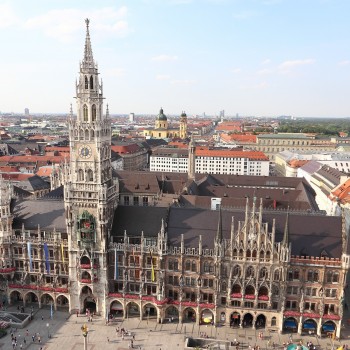
Munich's Marienplatz
When to visit: May to October
Munich is the bustling capital of Bavaria, Germany's third-biggest city. It offers many exciting cultural events, exciting activities, and remarkable tourist attractions, making it a global tourism center. Top of the list is the world-famous center of the Bavarian capital, Munich's Marienplatz, with the New City Hall, the large square where traders from across Bavaria would meet to conduct business and where locals would congregate to shop and watch medieval jousting tournaments.
Other points of interest for tourists here are the "new" and "old" town halls – the Neues Rathaus and Altes Rathaus, which were written much of the city's history. Other landmarks include the tall monument to the Virgin Mary, the Mariensäule built in 1638, and the elegant Fischbrunnen, a 19th-century fountain with bronze figures.















